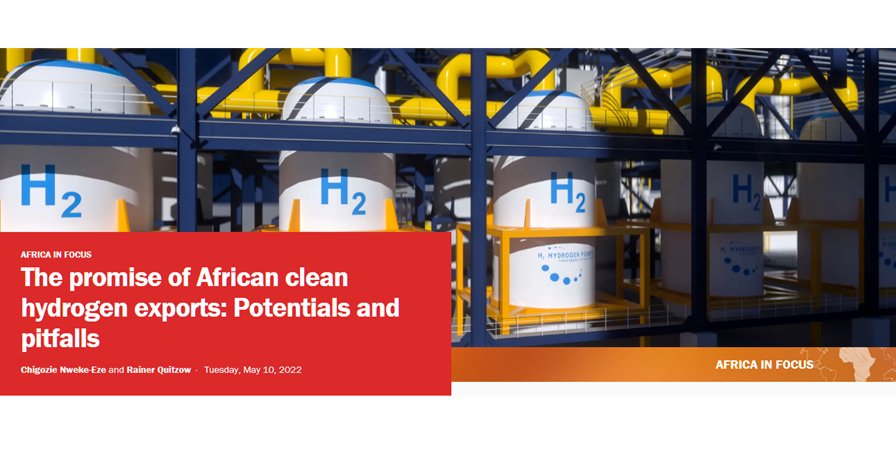
Abundant energy resources in many parts of Africa position the continent as a potential location for the production and export of climate-friendly hydrogen, based either on renewable (green hydrogen) or natural gas in combination with carbon capture and storage technologies (blue hydrogen). Green hydrogen is produced via electrolysis by splitting water molecules into their component parts using renewable electricity, while blue hydrogen is produced by splitting natural gas into hydrogen and CO2—after which the CO2 needs to be captured and stored.
Several African countries, especially around the Northern and Southern Tropics, have excellent solar and wind resources. Africa also has large untapped hydropower potential, mainly located along the Congo and Nile Rivers. Countries like Nigeria, Algeria, and Angola have some of the largest gas reserves in the world. Blue hydrogen has been suggested as a low-carbon option for these countries as they seek to diversify their fossil fuel-dependent economies.
This large resource potential has spurred political engagement by a number of European countries, most notably Germany. The German government has partnered with several African countries to develop a Hydrogen Potential Atlas and has committed $45.7 million to the National Green Hydrogen Development Strategy of Namibia. Germany and the Democratic Republic of the Congo have taken up discussions that could see the country relaunch the controversial Inga Dam III project. Germany has also set up so-called Hydrogen Offices in Angola and Nigeria to facilitate dialogue with these fossil fuel-exporting economies.
THE POLITICS AND ECONOMICS OF HYDROGEN IN AFRICA
But how realistic are these ambitions, given a number of factors complicating the region’s pursuit of this energy carrier?
First, hydrogen development cannot be separated from Africa’s broader energy landscape. More than half of the African population lacks access to electricity. Per capita consumption of energy in sub-Saharan Africa (excluding South Africa) stands at 180 kWh, compared to 13,000 kWh per capita in the U.S. and 6,500 kWh in Europe. Renewables also remain at an early stage of development: In 2018, the continent generated approximately 180 TWh of renewable power—approximately 20 percent of electricity generation and less than 0.02 percent of its estimated potential.

Despite the large potential, capacity additions for the production of green hydrogen raise the question of whether they are coming at the expense of expanding local access to renewable energy to meet socioeconomic needs, to enable clean industrial development, and to meet domestic climate targets within the context of the Paris Agreement. Furthermore, the production of green hydrogen comes with a significant demand for water at a time of increasing levels of water scarcity across Africa—especially in the northern and the Sahel regions. Similarly, the prospect of blue hydrogen as a climate-friendly energy carrier remains highly uncertain, due to residual greenhouse gas emissions, the need for safe CO2 storage sites, and controversy related to the viability of carbon capture and storage technologies.
SOURCE: BROOKINGS
Read the most up to date Fuel Cell and Hydrogen Industry news at FuelCellsWorks




